What Is Multilingual SEO?
Multilingual SEO is the practice of converting your website content into multiple languages. Allowing users searching Google in specific languages to find your website in organic search results.
For example, if you’re translating English content into Spanish to reach search engine users in Spain, you’re doing multilingual SEO.
Multilingual SEO allows you to expand to an international audience. And drive more sales to your business.
In this guide, we’ll teach you how to do multilingual website SEO. Step by step.
Step 1: Identify Your Markets
In which countries do you want to expand your business?
Consider ones with high search demand for your products or services.
Then, translate your website’s content into the dominant languages of those countries.
For example, if you decide to enter France, you’ll translate your website into French.
If you decide to enter Brazil, you’ll translate your website into Portuguese.
Semrush’s Market Explorer tool can help you identify which countries are worth expansion for your business.
First, click on “Analyze Category.” Then select your niche from the drop-down menu and click “Research a market.”
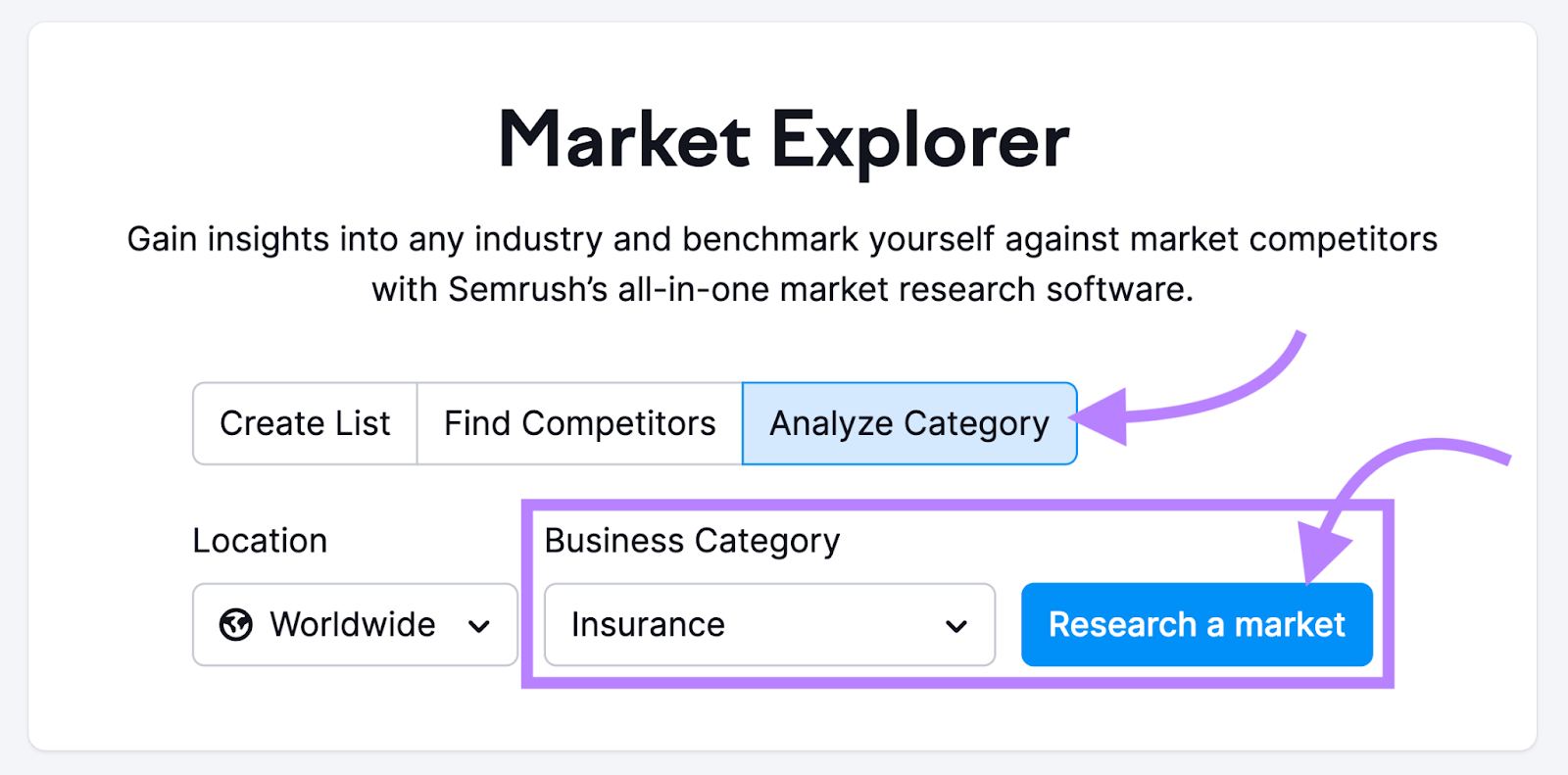
Then, navigate to the “Market Geo Distribution” section of the report.
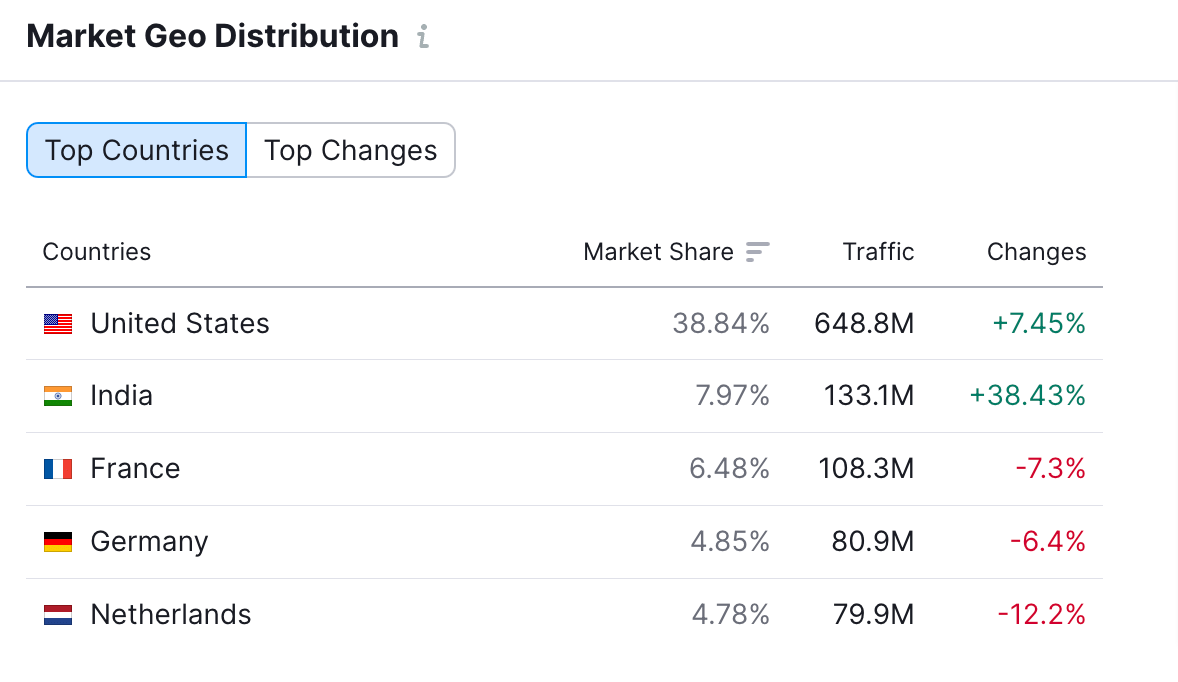
This should give you an idea of the countries with high traffic potential in your niche.
Another option is conducting competitor analysis.
If your competitors are present in certain countries, it’s likely those countries present a good business opportunity for you, as well.
Enter your competitor’s website into Semrush’s Domain Overview tool and click “Search.”
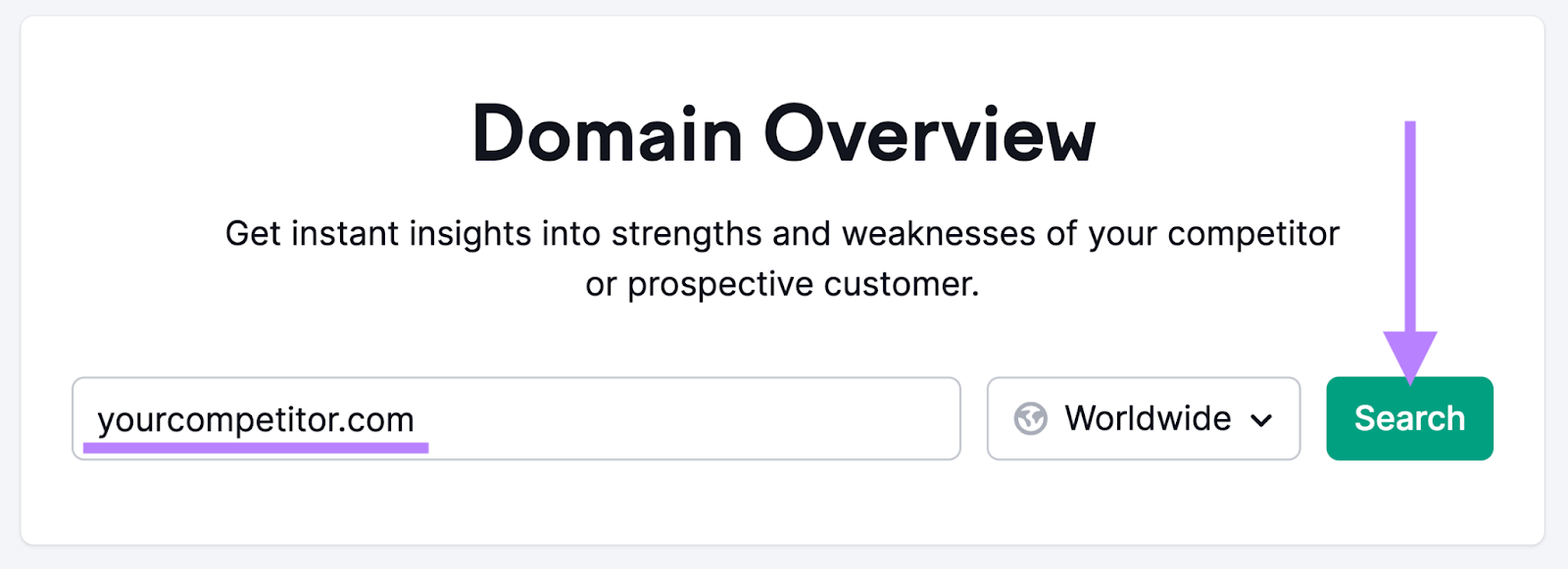
Then, go to the “Distribution by Country” section of the report.
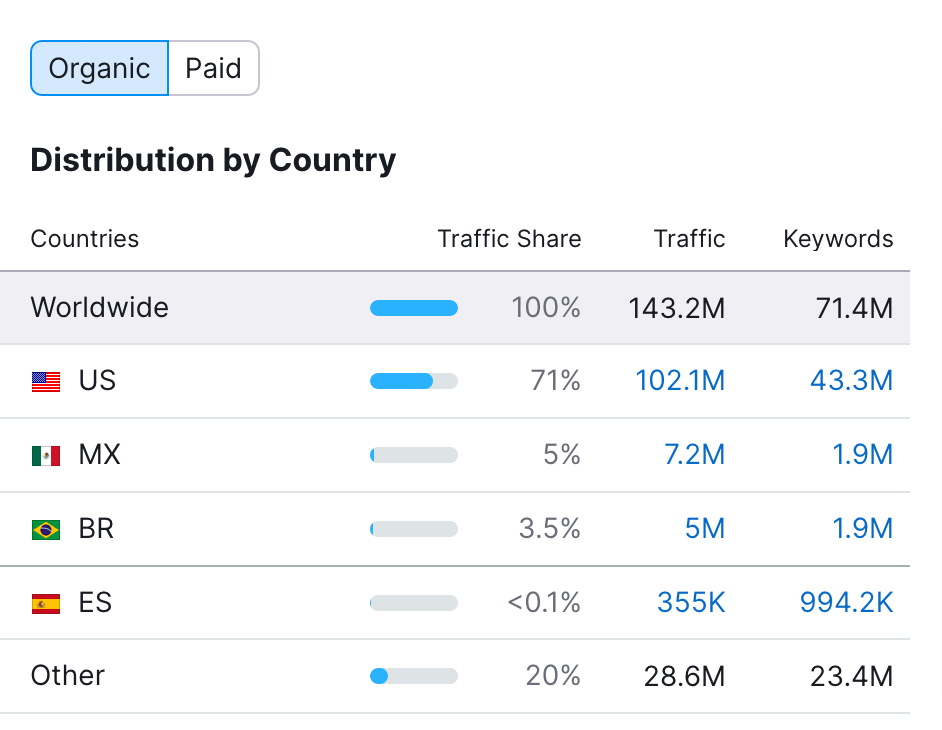
These are the countries bringing traffic to your competitors.
Translating your website content into the native languages of these countries could make sense for you, too.
Step 2: Conduct Keyword Research for Your Chosen Countries
After identifying your target countries, conduct keyword research.
At this point, consider hiring a native speaker or qualified translator to help brainstorm seed keywords in the country-specific language.
(Seed keywords are broad phrases or single words related to your business. You use them as a starting point to find other relevant, more specific keywords.)
Then, use keyword research tools to expand on your seed keyword list and pull metrics, such as search volume and keyword difficulty.
Semrush’s Keyword Magic Tool can help.
Plug your keyword into the tool and select your target country. Then hit “Search.”
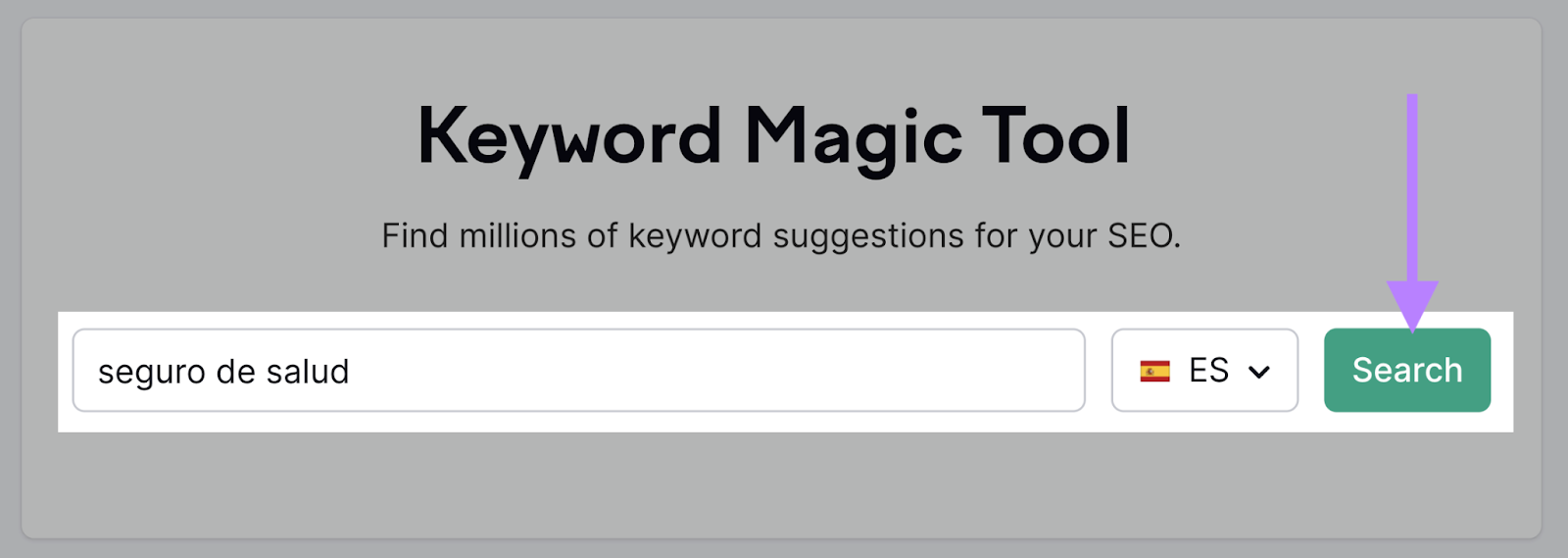
(Note: “seguro de salud” is Spanish for “health insurance.”)
The tool will generate relevant keyword ideas based on your input (in this case, over 23,000 keywords).
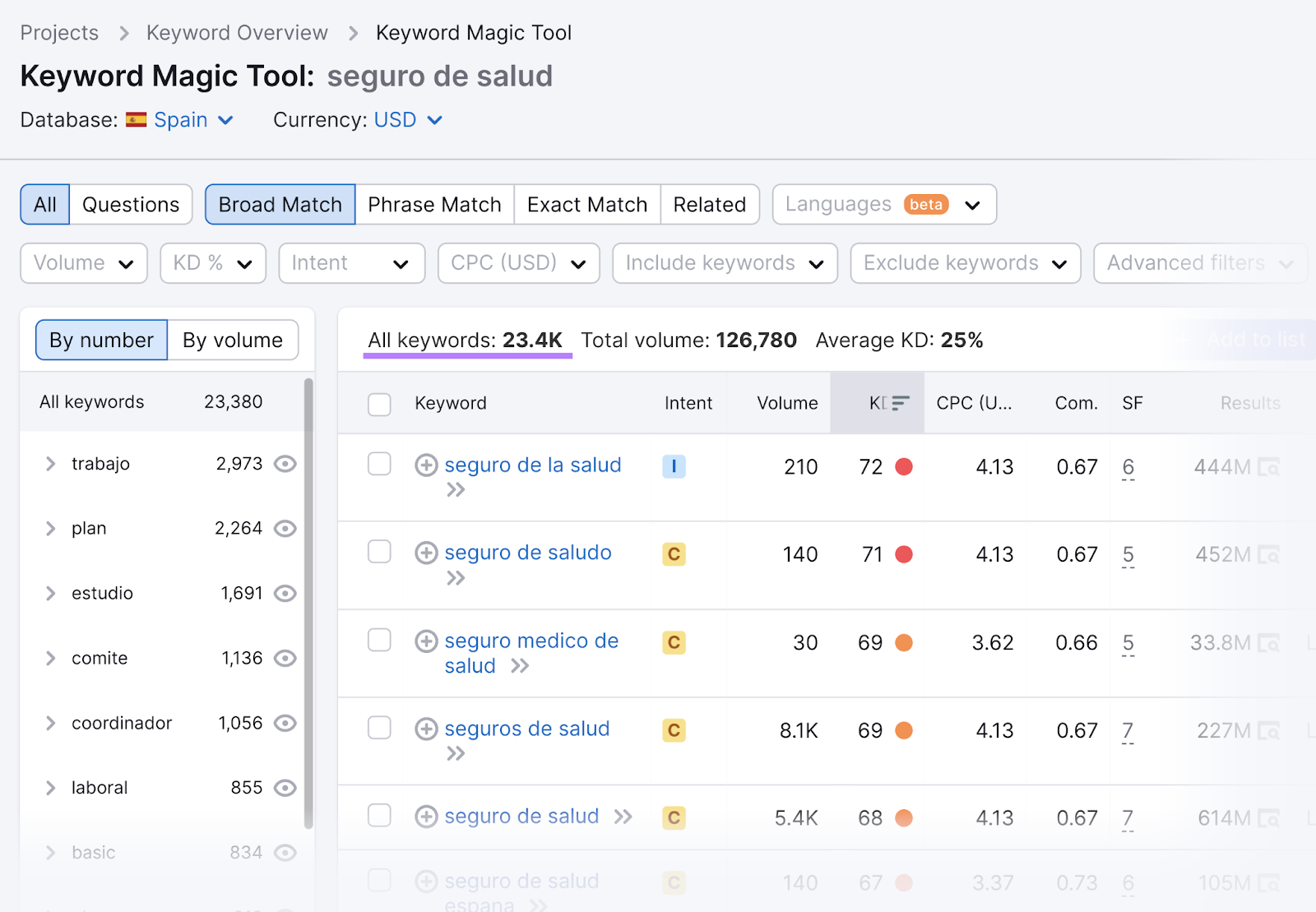
Some people use auto-translation tools, such as Google Translate, to directly translate keywords from English into other languages.
But these tools aren’t good enough yet. That’s why a native speaker or translator is an important part of multilingual SEO.
Knowing the specific keywords and language your ideal customers use is important. Really important.
We’ll cover this later, but you’ll use this information when translating your copy and writing title tags and meta descriptions.
So, don’t rely on automated translation tools. They make mistakes that can harm your multilingual SEO and keyword research efforts.
Step 3: Decide Your URL Structure
For a multilingual website, you’ll need to use dedicated URLs for each language and country version.
This will help Google index your site properly—i.e., store it in its massive database of webpages. So it can serve it to users searching in specific languages.
There are several options to choose from when deciding on URL structure. Each option has its own pros and cons.
Separate Domains
Using separate domains or ccTLDs (country code top-level domains) is one of the most popular options.
Examples:
- www.amazon.es
- www.amazon.fr
- www.amazon.de
Users are often familiar with the top-level domain of their country. So when they land on your site, they get a sense of being in the right place.
For this option, you’ll need to purchase and manage multiple domains. This requires a massive IT infrastructure investment.
From an SEO standpoint, you’ll need to build links to each domain individually. Which can be time-consuming.
But having separate domains gives you the ability to use localized hosting. Which could improve your page load times.
Subfolder
Using subfolders is also a very popular option for websites in multiple languages. With subfolders, all your content will sit within a single domain.
Like so:
- www.apple.com/es/
- www.apple.com/fr/
- www.apple.com/de/
Setting up different subfolders is relatively straightforward.
If you want to create a new language version of your site, introduce a new subfolder for that language and start creating individual pages in it.
From an IT perspective, this is easier than rolling out subfolders and pages on a completely different hosting setup.
That said, you can’t use localized hosting with this option.
Subdomain
Subdomains are another option to consider.
Examples:
- es.semrush.com
- fr.semrush.com
- de.semrush.com
The cons of using subdomains are similar to those of ccTLDs.
They're complicated to set up and can be technically challenging to maintain.
And many SEOs think Google treats subdomains as separate domains. This means you may need to build SEO authority for multiple domains as opposed to single, main domain.
But similar to ccTLDs, using subdomains gives you the ability to use localized hosting to improve page speed.
URL Parameters
Google doesn’t recommend using parameterized URLs when doing language SEO.
Examples:
- www.website.com?loc=es
- www.website.com?loc=fr
- www.website.com?loc=de
Avoid this option.
URLs with parameters confuse search engines. Search engines may find it difficult to understand and serve correct language versions to users.
Step 4: Translate and Optimize Your Pages
Once your URL structure is set up, the next step is to translate your pages. And optimize each page for its target keywords.
When translating, don’t cut corners and rely on translation tools, such as Google Translate, to generate literal translations from English to other languages.
This is rarely the right approach.
Automatic translation tools don’t take nuance into consideration. So you’ll often end up with sentences and paragraphs that read too formally or even misconstrue information.
Involving a human being to perform manual translation is key here.
Anything that can be translated should be. In addition to the on-page copy, this could include:
- Currencies
- Time zones
- Image alt texts
As you’re translating your website content, ensure you’re also optimizing your pages for the following on-page SEO elements:
Title Tags
The title tag appears as the title of your page in search results.
Here’s the title tag for our guide to search engine results pages (SERPs) in Spanish.

(Note: “SERPs: ¿cómo funcionan?” is Spanish for “SERPs: How Do They Work?”)
Title tags are often the main piece of information people use to decide which result to click on.
Here’s some advice on writing title tags for your translated pages:
- Keep it brief. Keep title tags to fewer than 60 characters. Google truncates title tags over 60 characters
- Use your multilingual SEO keyword. This helps Google understand what topic the page covers. So it can rank it appropriately.
- Don’t do clickbait. Make sure your page delivers what you promise with your title.
Meta Descriptions
The meta description shows up as the short description of your page in search results.
Here’s the meta description for our Spanish-language SERP guide.

Meta descriptions aren’t a direct ranking factor. But they can influence the click-through rate (CTR) of your pages.
Here are some tips to follow when crafting meta descriptions for your translated pages
- Keep them short. Google cuts off meta descriptions that extend over 120 characters
- Use your keyword. Google bolds words and phrases closely related to the query
- Use active voice. Address the searcher directly
URL Slugs
Google displays a URL slug in search results to let users know where they will land if they click on a page.
Here’s the URL slug of our guide to SERPs (shown here as breadcrumbs).

And here are some best practices to follow when creating URL slugs on your multilingual site.
- Keep them short and descriptive. Google truncates longer URLs. The best way to make your URL slugs short and descriptive is by including your language-specific target keywords in them
- Use hyphens to separate words. Not underscores
- Use lowercase text. This is a general rule of thumb
- Use safe characters. No symbols in URL slugs. They can make your URLs appear spammy.
- Avoid dates. Dates in URLs make your content appear outdated
Internal Links
Internal links are links from one page to another on your website.
Here’s what an internal link looks like:
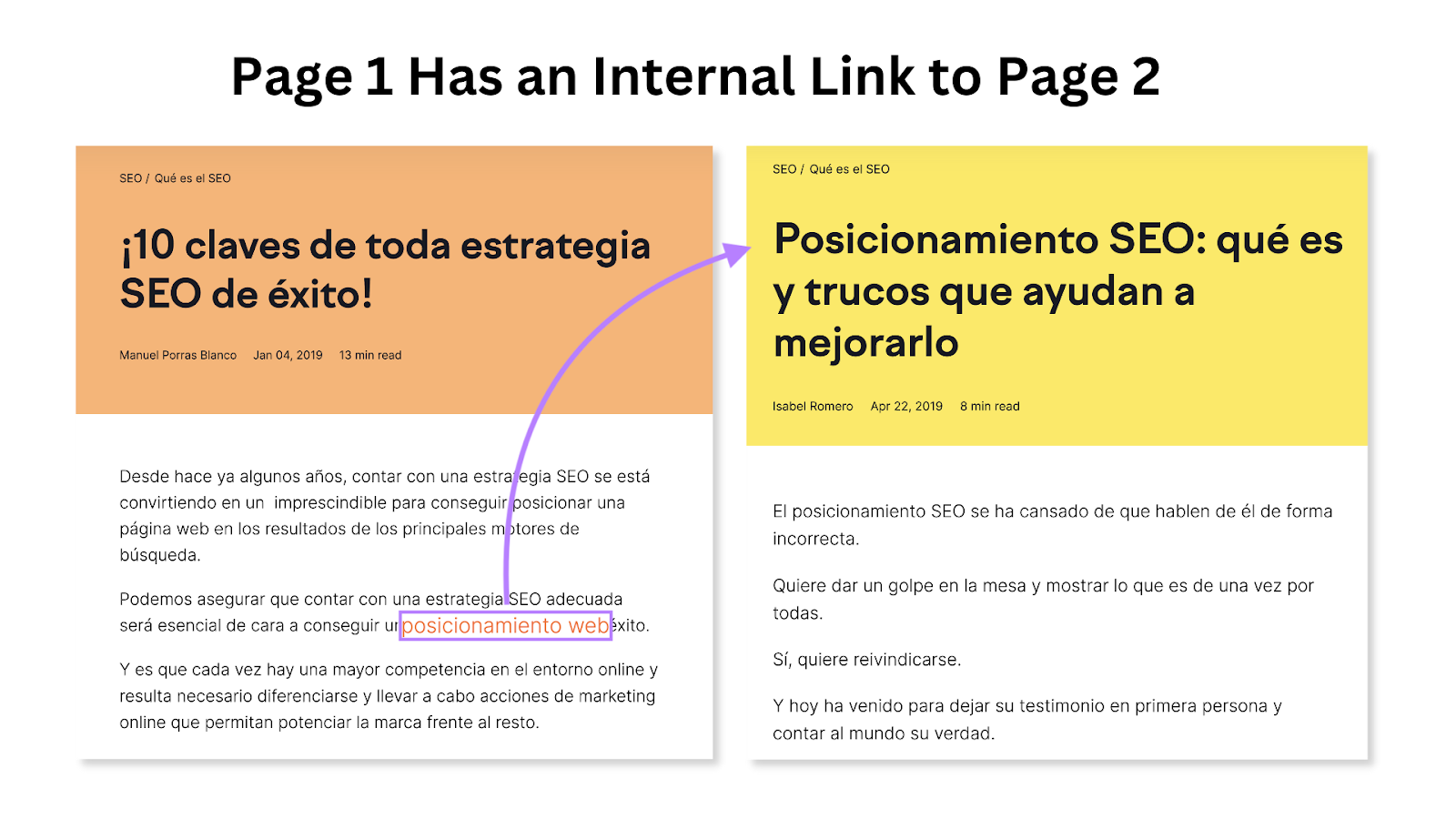
Linking to relevant internal resources helps visitors navigate your website and find more information. Google also uses them to discover more pages on your website.
When doing SEO for a multi-language website, add internal links to relevant pages in the same language, i.e., Spanish pages linking to other relevant Spanish pages on your site.
Not only will this send your users to the right language version of your pages, but it will also help Google understand the relationship between pages.
Step 5: Implement Hreflang
After translating your website content and performing on-page optimizations, implement hreflang attributes on your multilingual website.
Hreflang is an HTML attribute websites use to tell search engines the location and geographical targeting of a webpage.
In simple terms, hreflang helps Google serve the right language version of your pages in search results.
Here are the hreflang attributes we use on the Semrush website homepage:
<link rel="alternate" hreflang="en" href="https://sem.jupiterseotool.com/" />
<link rel="alternate" hreflang="es" href="https://es.semrush.com/" />
<link rel="alternate" hreflang="de" href="https://de.semrush.com/" />
<link rel="alternate" hreflang="fr" href="https://fr.semrush.com/" />
<link rel="alternate" hreflang="it" href="https://it.semrush.com/" />
<link rel="alternate" hreflang="pt" href="https://pt.semrush.com/" />
<link rel="alternate" hreflang="vi" href="https://vi.semrush.com/" />
<link rel="alternate" hreflang="tr" href="https://tr.semrush.com/" />
<link rel="alternate" hreflang="zh" href="https://zh.semrush.com/" />
<link rel="alternate" hreflang="ja" href="https://ja.semrush.com/" />
<link rel="alternate" hreflang="ko" href="https://ko.semrush.com/" />This code tells Google about the alternate, language-specific versions of our homepage.
When users conduct searches, Google serves the most relevant version to them. That’s the beauty of hreflang.
When implementing hreflang tags:
- Place them in the <head> section of your pages.

- Use the correct ISO 639-1 language code for each page
- Use them on all pages that have been translated into multiple languages
- Use self-referencing hreflang on every page (i.e., the one that points back to itself)
That last point needs explaining.
So if you want to add a hreflang tags between an English page (https://website.com/blog/hello) and a Spanish page (https://website.com/blog/hola), both pages should have the following hreflang tags:
<link rel="alternate" hreflang="es" href="https://website.com/blog/hola" />
<link rel="alternate" hreflang="en" href="https://website.com/blog/hello" />The first one specifies the URL of the alternate Spanish version of the page. The second one is a self-referencing tag that points back to the page itself.
The Spanish page also needs both hreflang tags.
To learn more about hreflang and how to implement it on your site, read our hreflang guide.
Once you complete your hreflang implementation, audit your site to ensure no implementation errors occurred.
Semrush’s Site Audit tool can perform this audit.
First, set up a project in Site Audit and crawl your site.
After your crawl is complete, go to the “Issues” tab. And search for “hreflang” in the search bar.
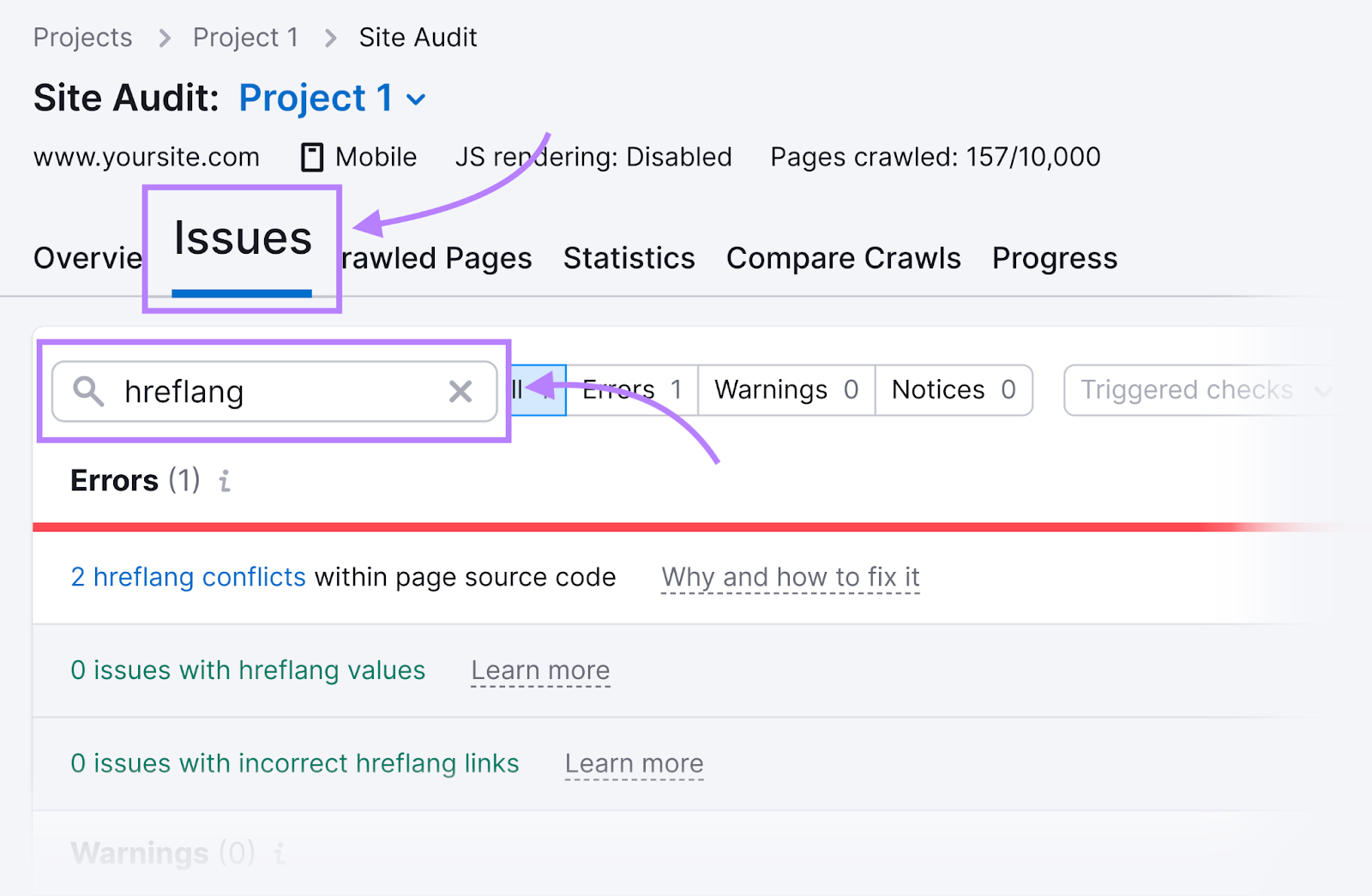
The tool shows whether your site has hreflang implementation errors. And offers advice on how to fix each issue.
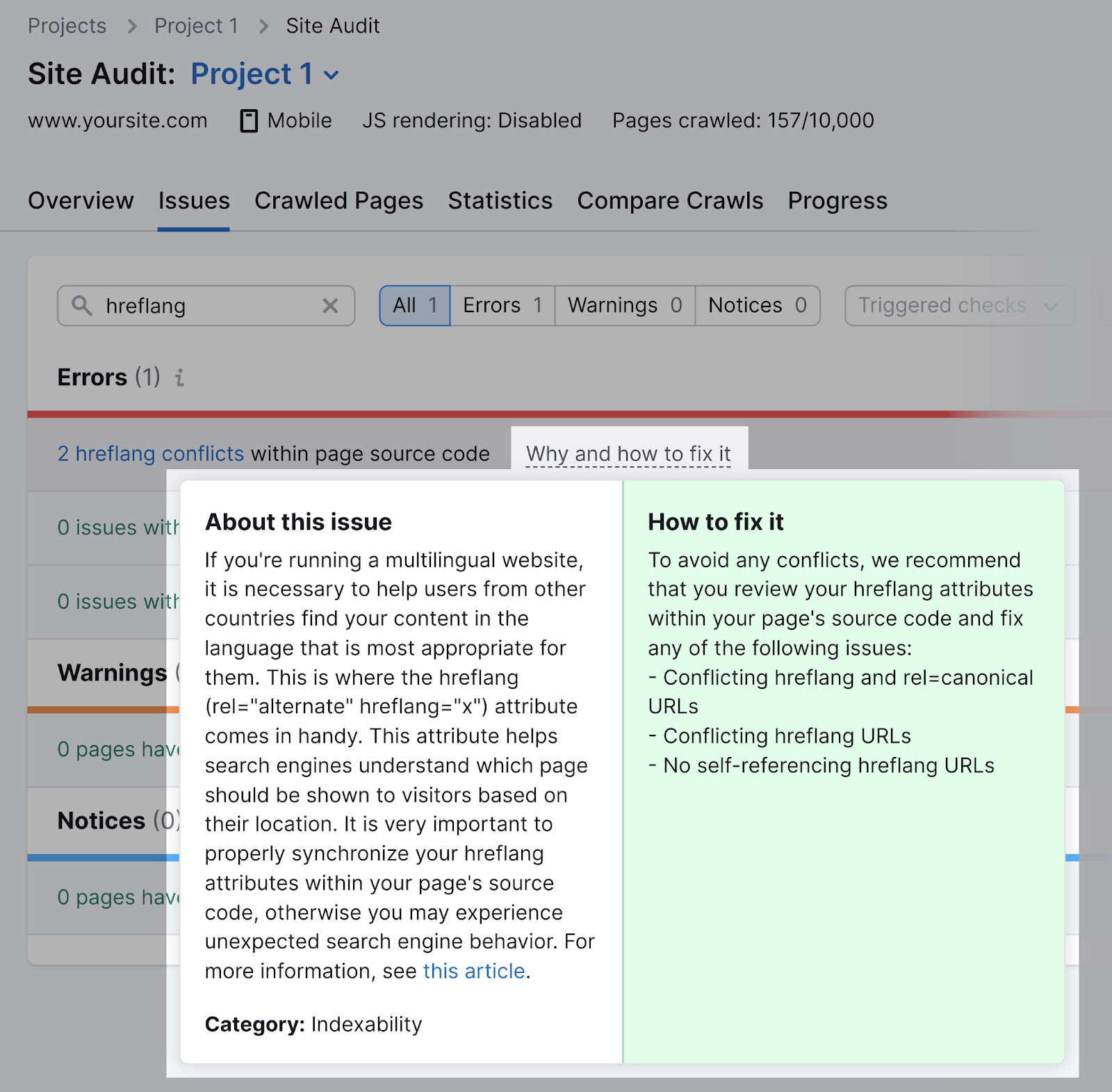
Step 6: Build Backlinks
Acquiring backlinks is an essential step in building a successful multi-language website.
Search engines like Google see backlinks as “votes.”
Generally, the more votes you have, the better your chance of ranking well in search results.
The majority of your backlinks need to be from relevant websites—both niche- and language-wise.
If you sell bodybuilding supplements and have translated your content into French, building a link from a health and fitness blog that covers supplements in French could be valuable.
When building links, always aim to build links from reputable, high-authority websites. Links from high-authority sites carry more weight.
These are generally websites that publish high-quality content. Popular niche websites, bloggers, and news websites are all good examples.
There are plenty of ways to build backlinks to your multilingual website.
Here’re some strategies we recommend:
Broken Link Building
Broken link building involves finding broken links on other websites and contacting the website owners to suggest replacing the broken link with a working, alternative link from your own site.
It works because nobody wants dead links on their website. They contribute to a poor user experience.
So when you tell people about broken links on their site, they’ll likely replace them with working ones.
To start, look for broken pages on your market-specific competitors’ website.
Plug your competitor’s domain into Semrush’s Backlink Analytics tool and click “Analyze.”
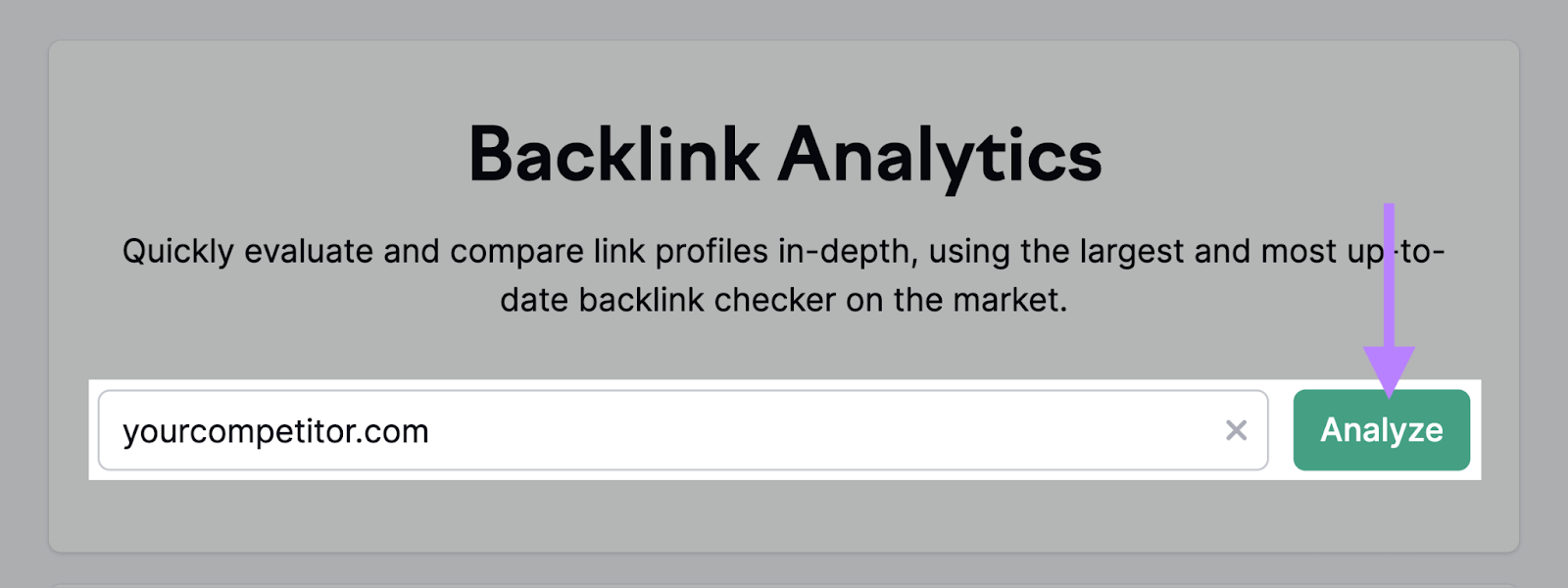
Then go to the “Indexed Pages” report. And check the “Broken Pages” box.
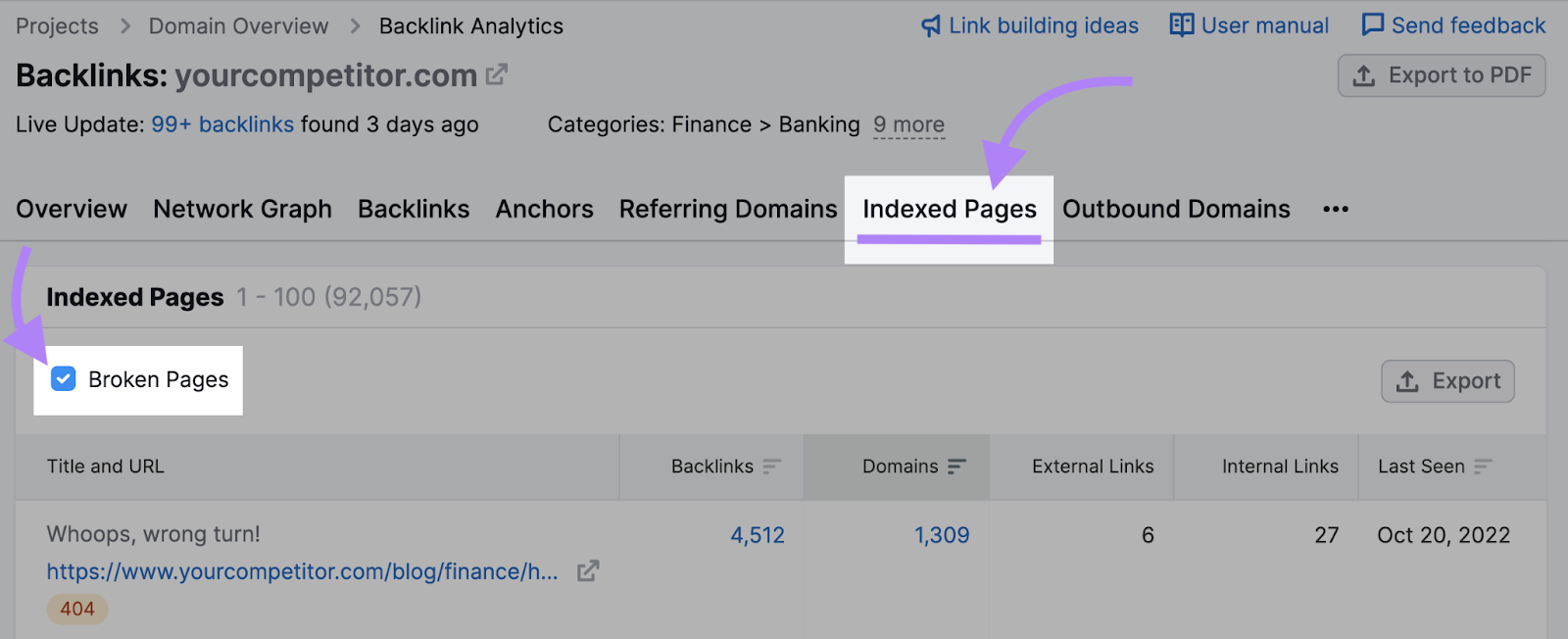
Now the tool will reveal your competitor’s broken pages.
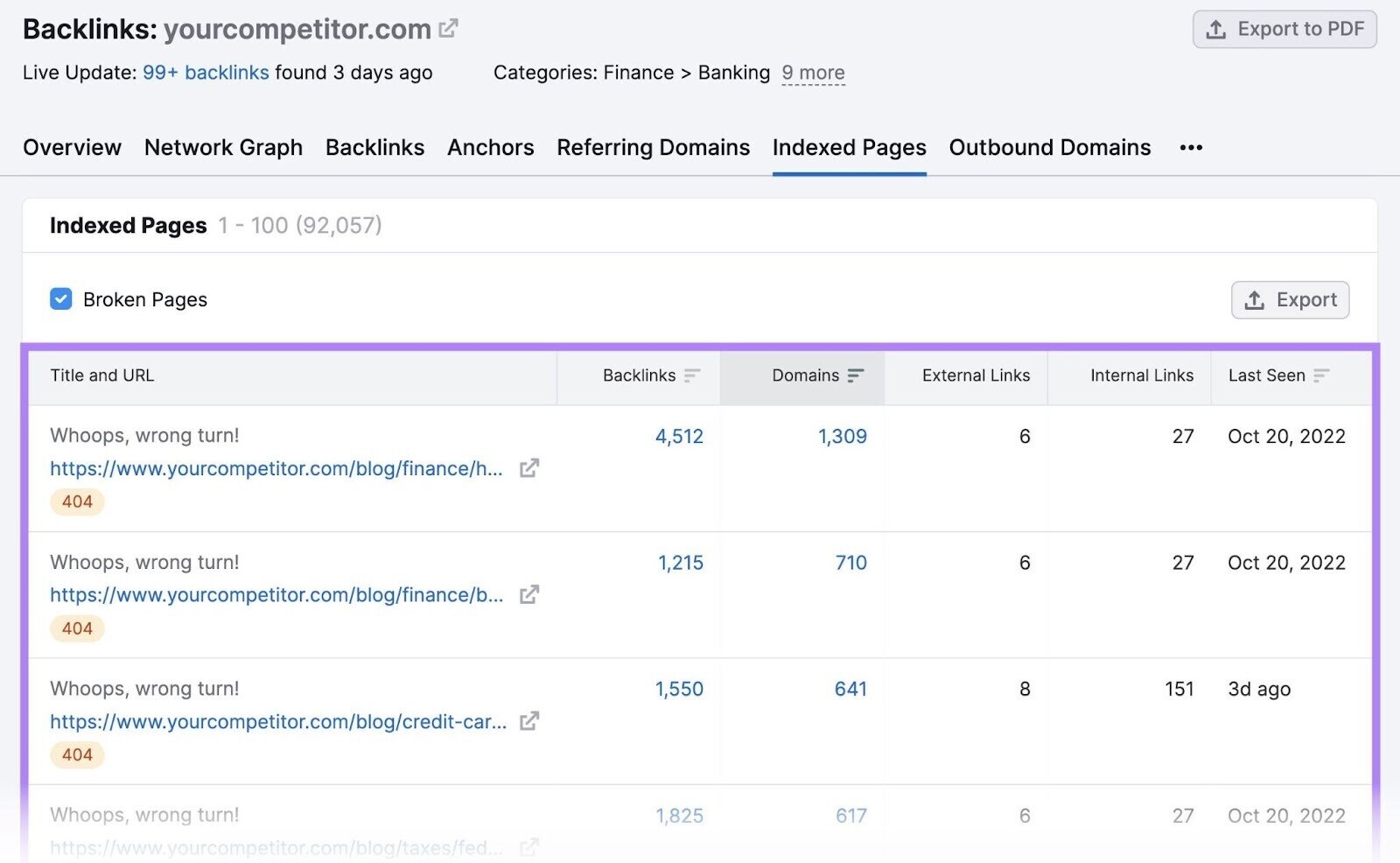
From here, look at the topics these broken pages used to cover.
Check whether your site has similar content. If not, create similar content if it’s relevant to your site.
Then, reach out to everyone linking to the broken pages. And pitch your replacement link.
Look at the referring domains column. These are the number of websites you can reach out to.
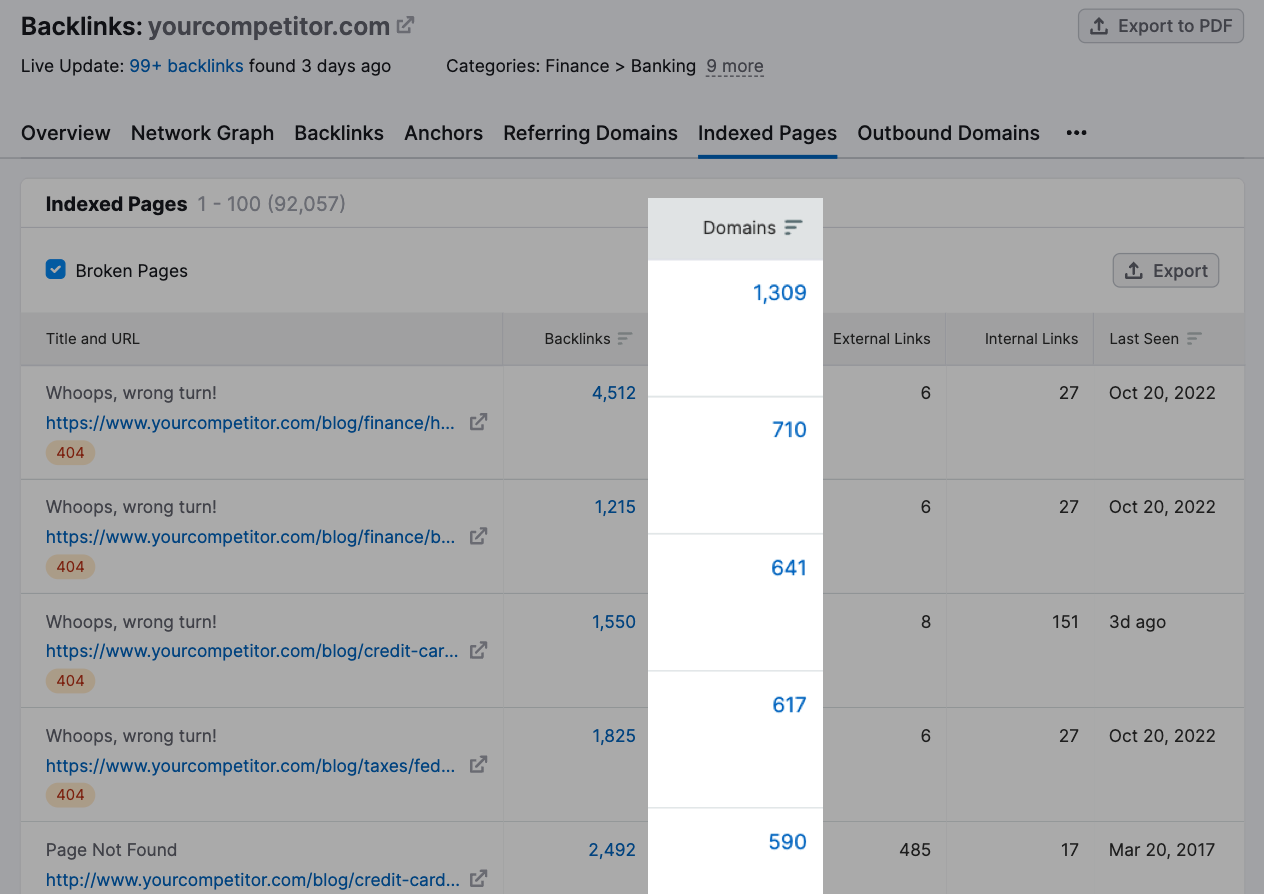
For advice on how to reach out to websites for backlinks, check out our guide to link building outreach.
Digital PR
Digital PR is about getting media coverage for your brand. This helps boost awareness of your business, products, and services.
Digital PR can also complement your link building efforts in new markets.
Start by sharing newsworthy stories with journalists.
Journalists love stories.
If you’ve conducted new research that impacts an industry, journalists may want to feature the results. And you could receive a backlink.
For example, if you’re in the recruitment industry, you could conduct a study around employees’ growing interest in remote work. And create an in-depth piece of content detailing the study’s results on your website.
Once the content is published on your site, create a target list of media outlets to pitch.
Digital PR tools like Prowly can help here.
After you sign up, click “Database” from the sidebar.

Select “Media outlets” and search for your desired publication. And select your preferred country.
For this example, we’ll search for “El Mundo.” Which is a popular newspaper in Spain.
Then, hit “Search.”
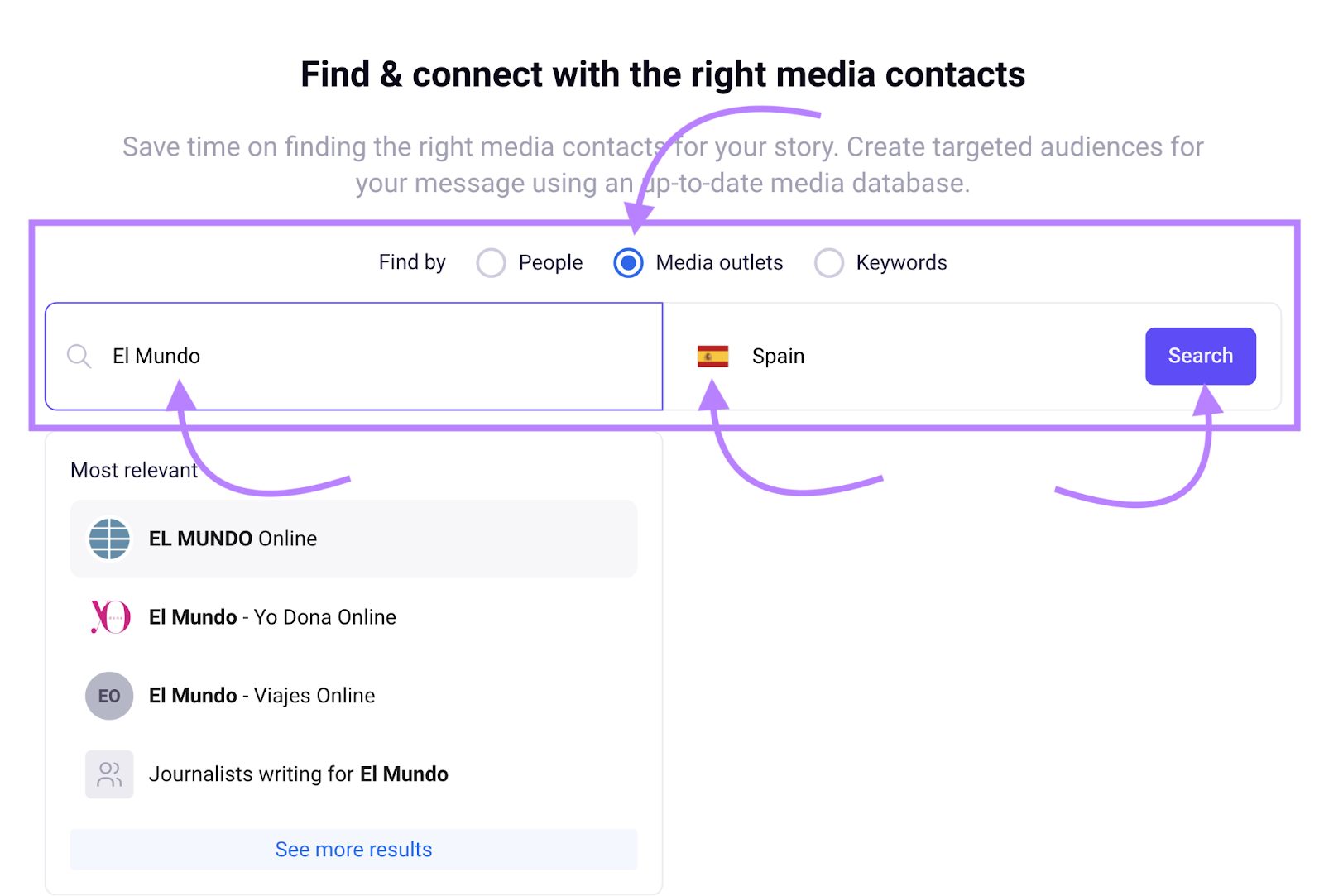
The tool will show you a list of media outlets matching your search query.
Click on the “Details” button for your chosen media outlet.
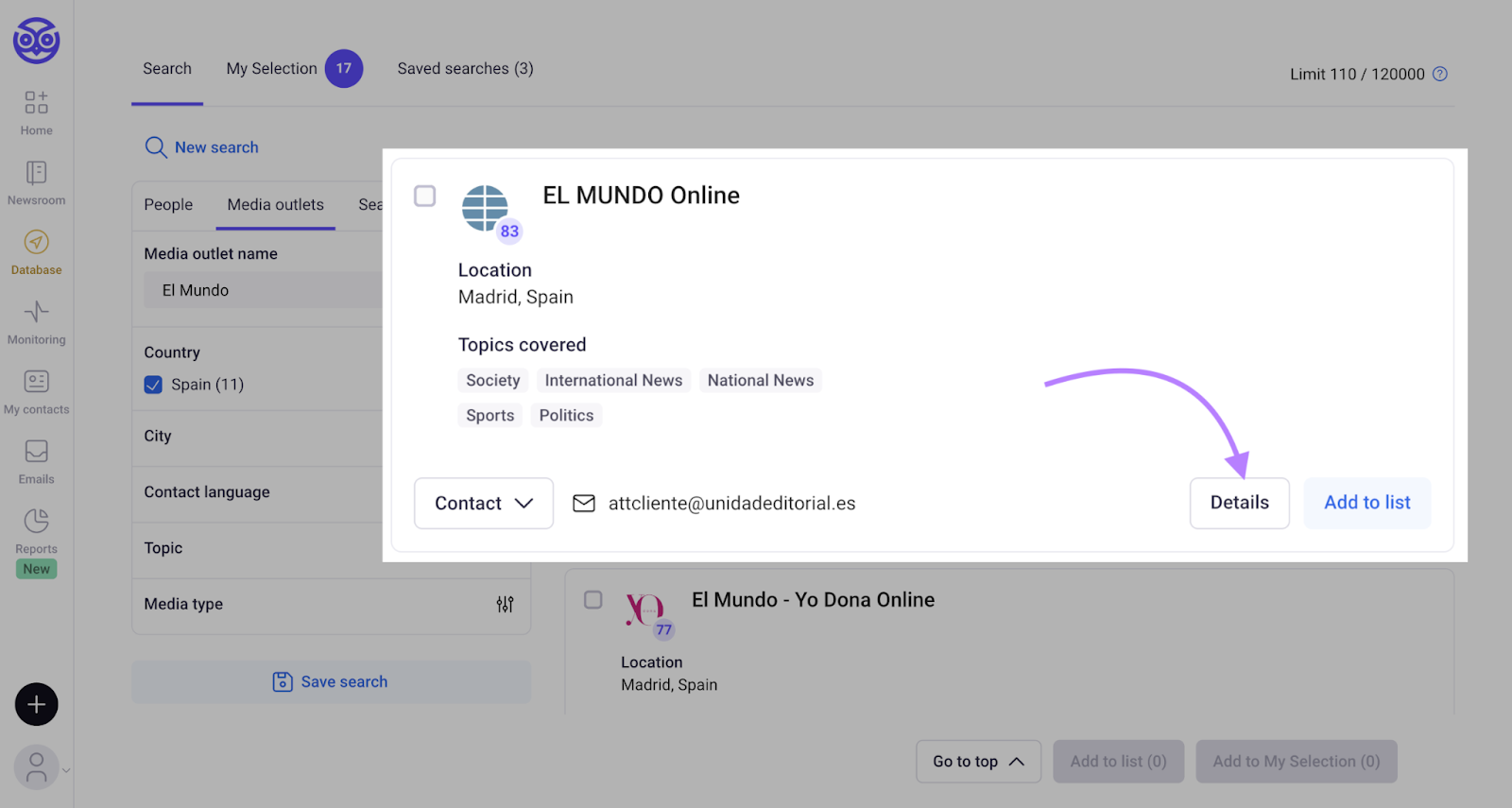
You’ll see a full list of writers, editors, or reporters you can contact for your story.
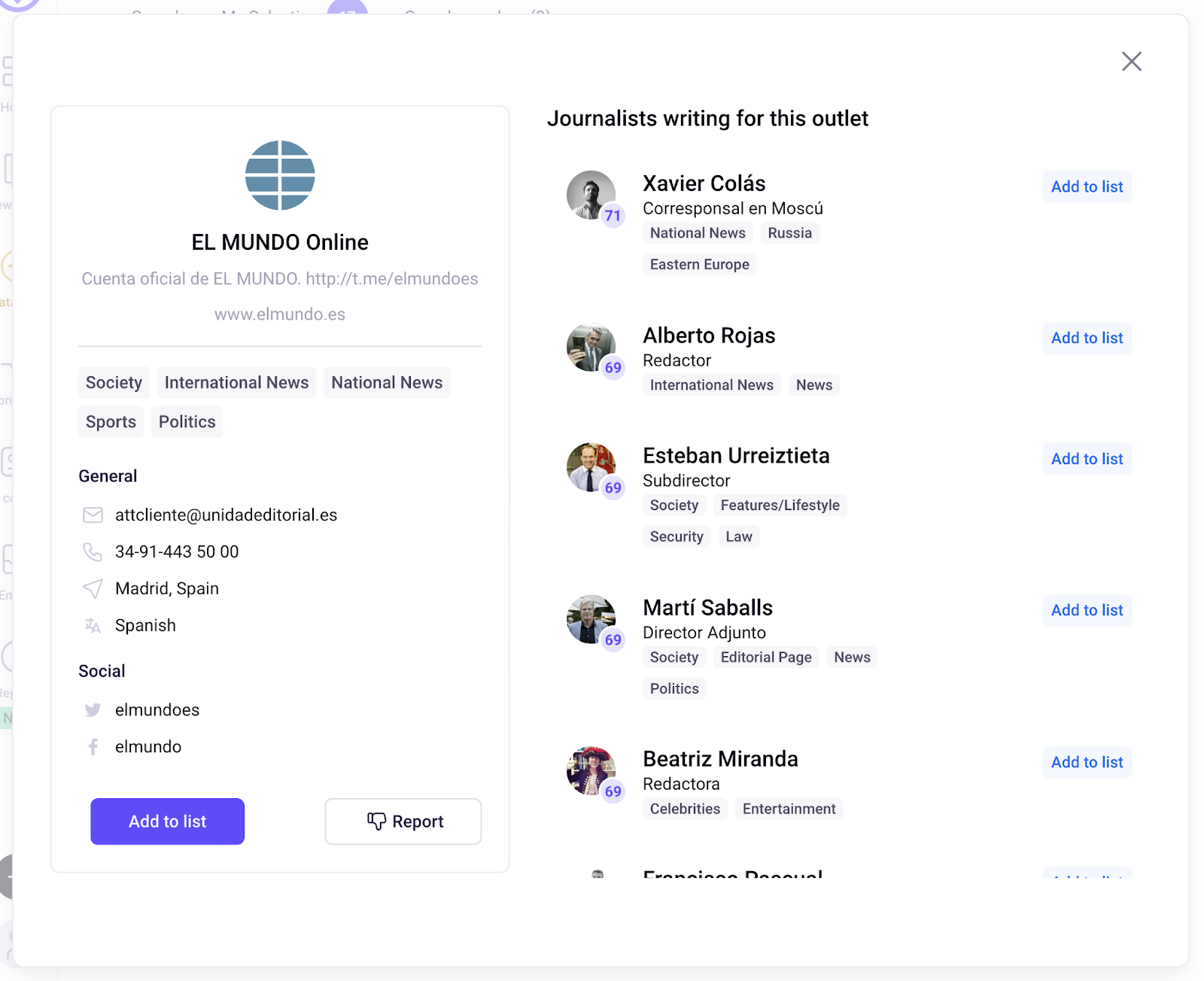
Click on a specific media contact to get their contact details. Like this:
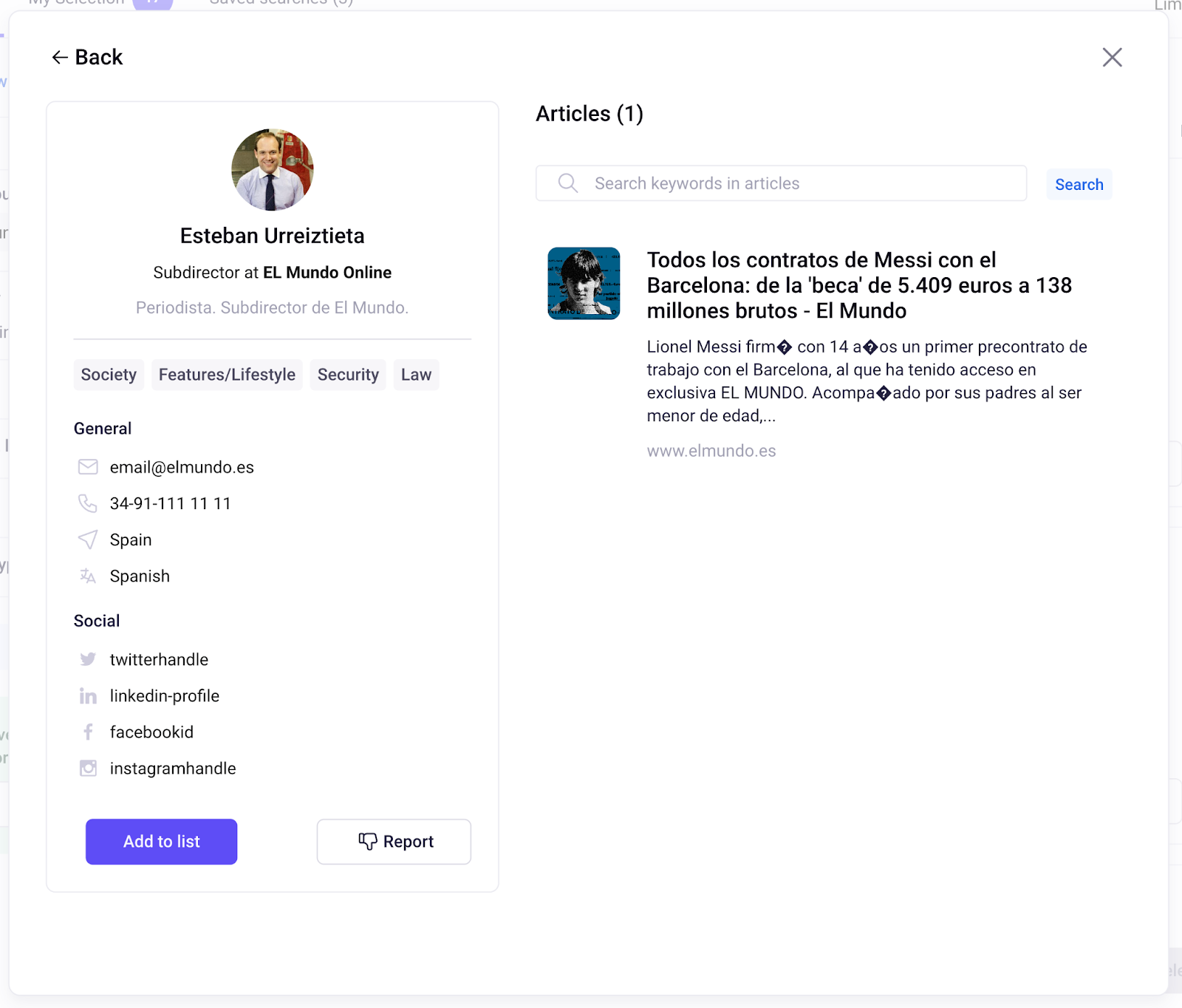
Pitch your story to the relevant person. If your story is a good fit for their publication, they may feature it. And may link to your website in return.
Competitor Backlink Research
Researching your competitors’ backlinks provides insight into the content types that tend to attract links in your space.
You can then create similar content types on your website. And, ideally, earn backlinks.
Use Semrush’s Backlink Analytics tool to analyze your competitor’s link profile.
Open the tool, enter your competitor’s website, and click “Analyze.”

Then, navigate to the “Indexed Pages” tab.
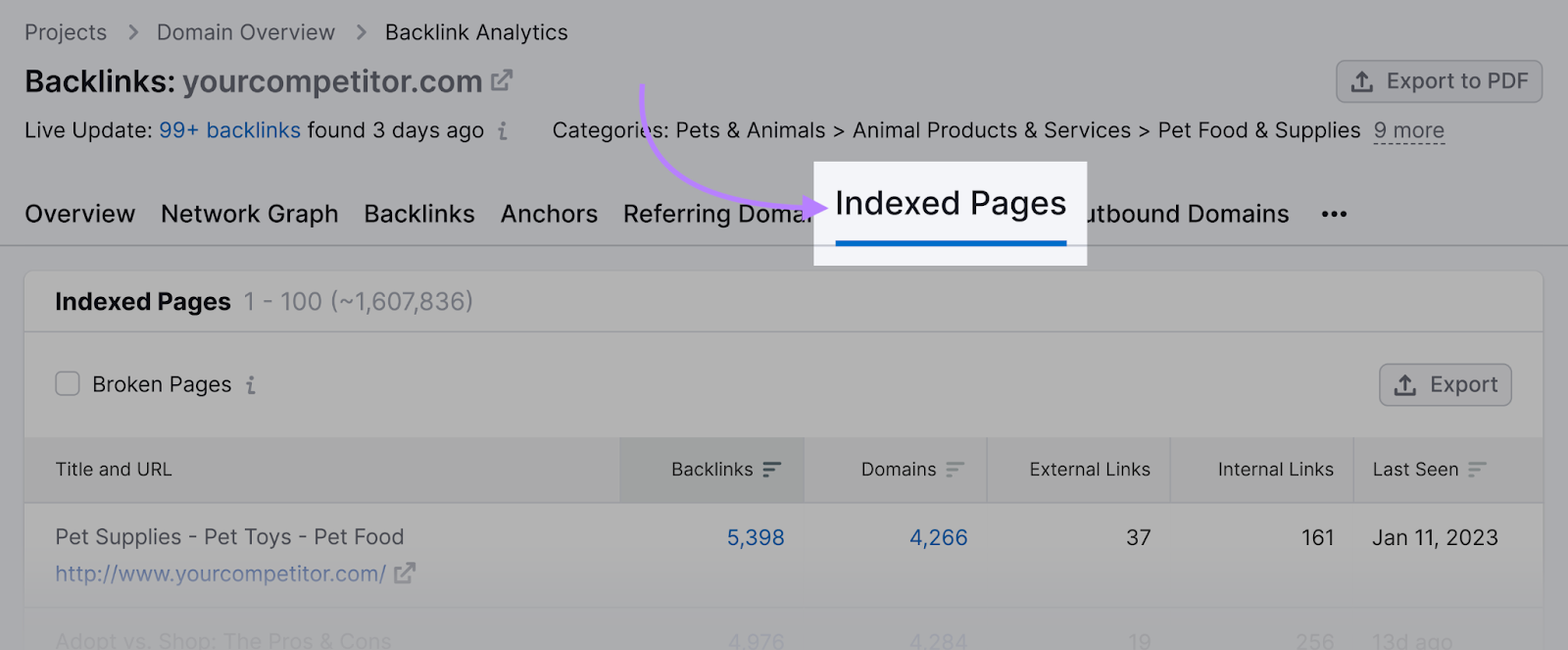
This shows pages on your competitor’s site with the most backlinks.
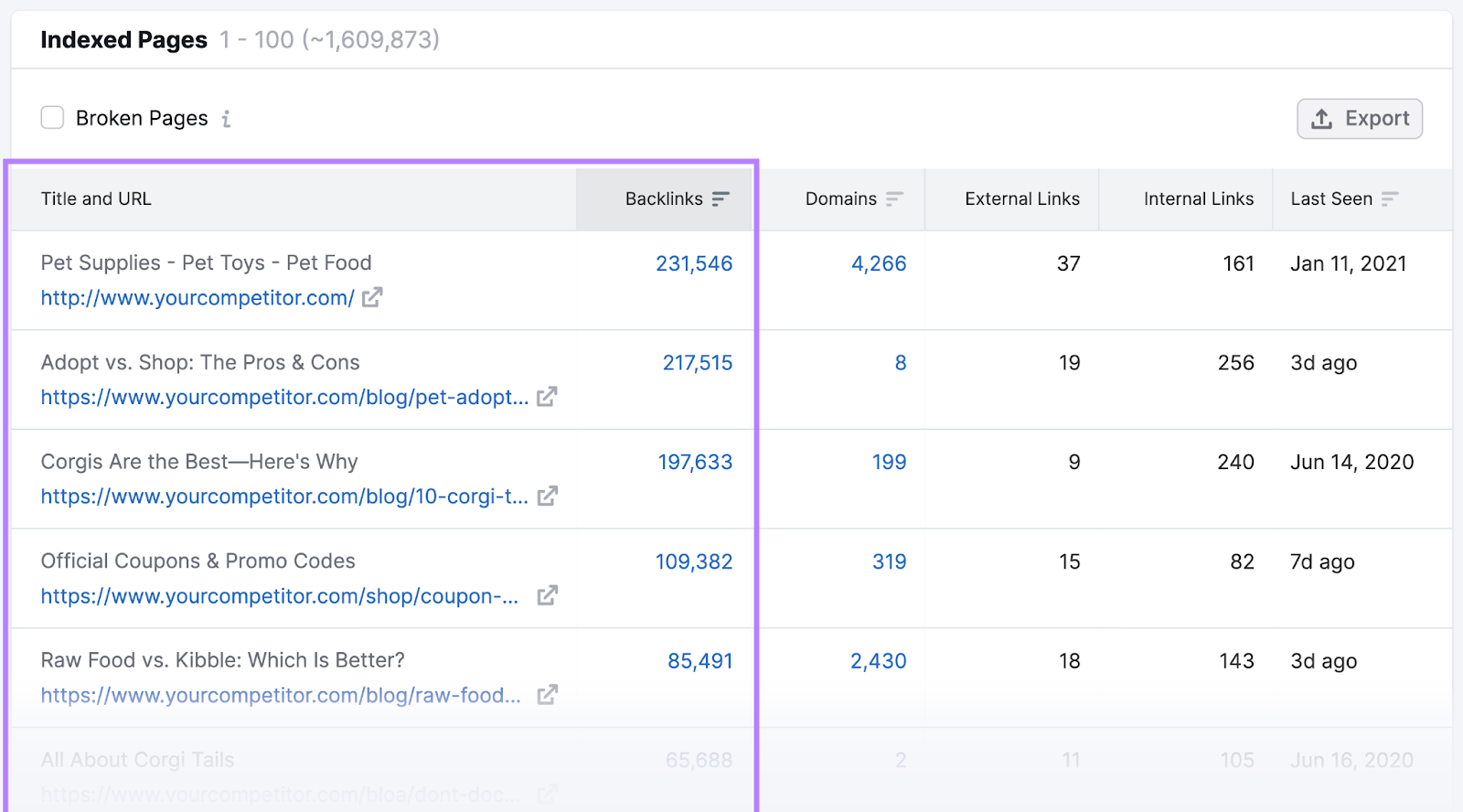
Analyze these top pages. You may see tools, studies, and in-depth guides driving lots of links to your competitors.
If you see a competitor earning links this way, consider creating similar types of content. To earn more backlinks and start outranking your competitors.
Go Multilingual with Semrush
Multilingual SEO is the way forward if you want to drive traffic and revenue by translating your website content into other languages.
Semrush offers a suite of SEO tools that can help you build a strong SEO presence with your multilingual website.
From keyword research to on-page optimization and link building, Semrush can help you through the steps involved in building a successful multilingual site.
